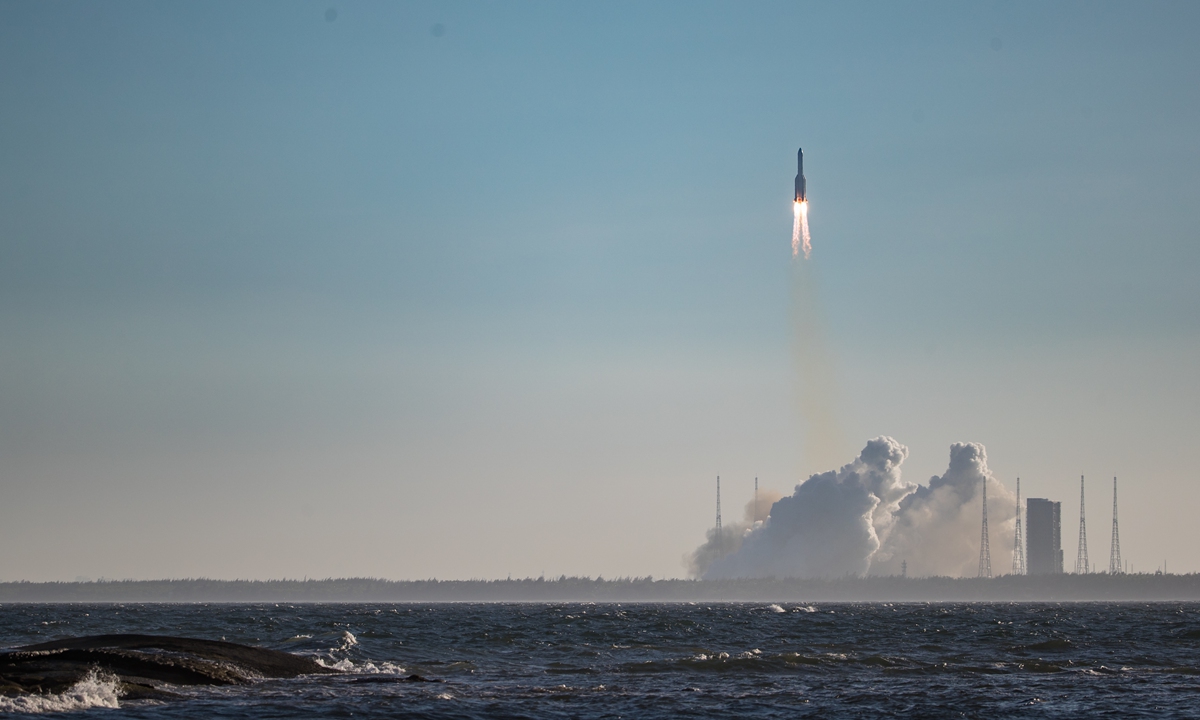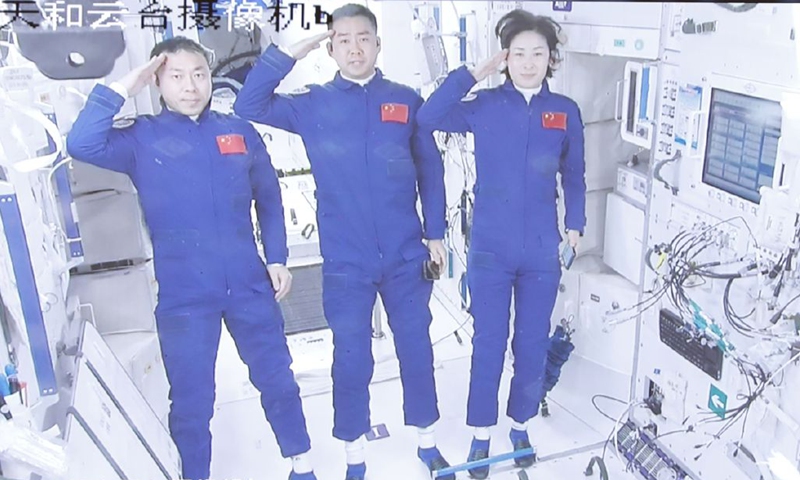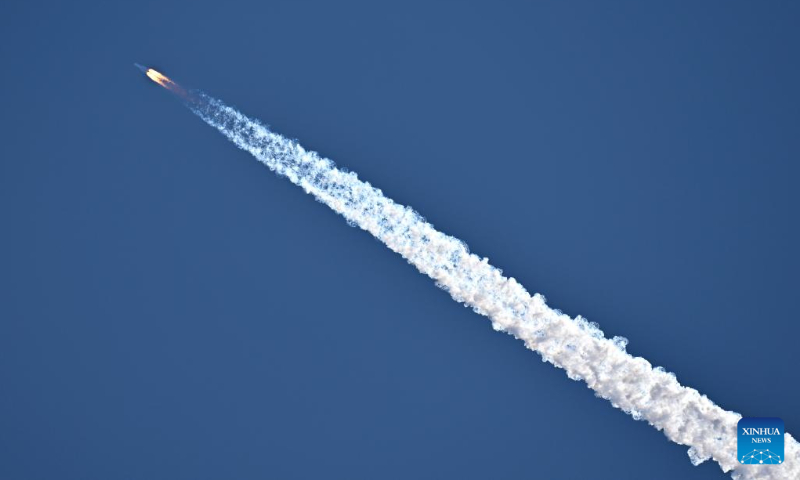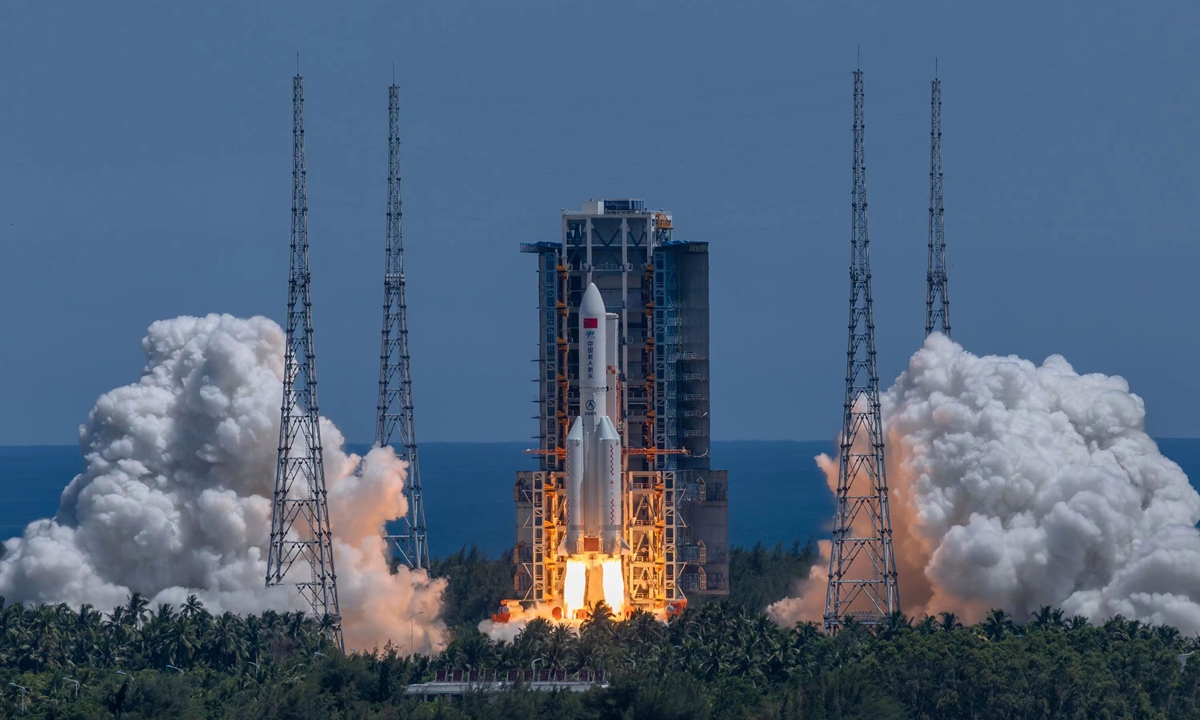The United States has been clamoring for fierce competition with China, and China is now showing the United States what true competition is in all areas.
Shenzhou-14 crew enters Wentian lab module, as China's space station is near completion
The Shenzhou-14 crew members, Chen Dong (center), Liu Yang (right) and Cai Xuzhe salute from the Wentian (Quest to The Heavens) lab module on July 25, 2022 from some 400 kilometers above the Earth. The three taikonauts checked in to their office and home unit in space at 10:03 am. Photo: cnsphoto
The Shenzhou-14 crew of three taikonauts, who watched live the epic launch of the Wentian [Quest to The Heavens] lab module from some 400 kilometers above the Earth and cheered it on with applause on Sunday, did not wait long to check into their office and home unit in space, as they opened the gate of the freshly docked new module and entered the Wentian at 10:03 am on Monday, the Global Times learned from the China Manned Space Agency (CMSA). It was a historic first that the taikonauts entered the scientific lab module in orbit, the CMSA noted in a statement it provided to the Global Times on Monday morning, while disclosing that the crew shall execute missions including space station combination attitude control, verification of robotic arms, and use of the Wentian airlock and its small robotic arm to perform spacewalks under the plan. The Wentian lab module conducted a smooth rendezvous and docking with the China Space Station's Tianhe core module at the front port at 3:13 am on Monday, some 13 hours after it was launched via a giant Long March-5B carrier rocket from South China's tropical island province of Hainan. It was a first for two pieces of 20-ton level spacecraft to execute the "heavenly kiss" in the country's history, and it also marked an unprecedented milestone event that took place while the China Space Station combination was carrying taikonauts onboard, the CMSA announced. Before China, only the former Soviet Union and the US were capable of assembling ultra-large spacecraft in orbit. Designed mainly to support space science and biology experiments, the 23-ton Wentian lab module is heavier than any other single-module spacecraft currently in space, including those with the International Space Station (ISS), the Global Times learned from the mission contractor, the state-owned space giant China Aerospace Science and Technology Corp (CASC). The Wentian also hosts eight experimental cabinets onboard. It will mainly focus on the study of space life sciences, which can support the growth, development, genetics and aging of multiple species of plants, animals and microorganisms under space conditions, Lü Congmin, a research fellow at the Chinese Academy of Sciences and deputy chief designer of the space utilization system of China Manned Space programs, told the Global Times. More than 10 research directions have been planned and more than 40 scientific projects have been established for the Wentian, Lü said. To meet the high energy requirements for the large number of scientific experiments in space, the Wentian is equipped with a pair of the largest flexible solar panels that the country has ever developed.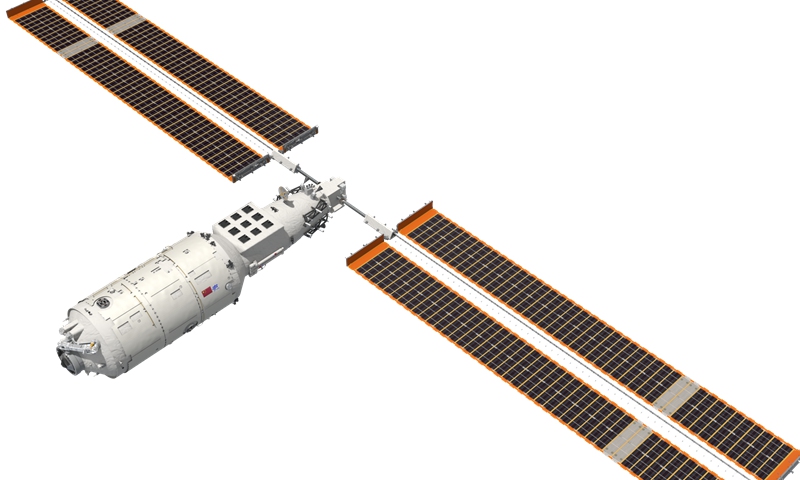
The China Space Station is planned to become fully operational before the end of 2022, aiming to accomplish the in-orbit assembly of the country's most ambitious program in less than one year and a half since the launch of the Tianhe core module in April 2021.
RELATED ARTICLES
Science
A recent report by US magazine The National Interest demonized China's achievements in space by interpreting China's space exploration missions, including the lunar program and manned spaceflight, as "threats to US leadership in space"
and a "detriment to US national security." This report is just the tip of iceberg in the US' sustained attempts to suppress and discredit
China's space program. The US has also published military reports that incorrectly describe China's military capabilities in space, with the
new NASA chief personally slandering China's space achievements, to promote the mindset of a new Cold War in space and the "China threat"
theory. But facts show that the US is the biggest threat in space with its space hegemony based on its technological advantages. Meanwhile,
China sees space as a new field to expand international cooperation while sharing its achievements with other countries by providing them
with opportunities to make use of space resources.
Related posts:
US versus China – in outer space
Tiangong-2 space lab draws global praise, with the world’s first “cold” atomic clock on board
China successfully launches 1st Mars probe
China unveils its 2020 Mars probe, Tianwen-1 天問一号
Chinese home in space
China launches 1st lunar sample return mission, aims for multiple breakthroughs in aerospace history
China's Chang'e-4 spacecraft, a world's first mission to moon's far side, boosts Beijing a space superpower
Long March-5 rocket in position for China's first Mars probe
China’s Zhurong sends back signals, marking success of Tianwen-1's landing on Mars
China lands on far side of the moon
Lunar probe, eliminating poverty, China did both



